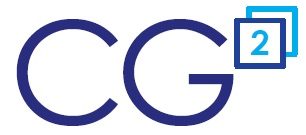You're in a sales role for a CPG company and your organization is implementing a trade promotion management solution to manage manufacturer rebates and allowances.
You ask, "What’s in it for me?"
Before we answer the question, let's review what’s being asked of you:
- Learn a new TPM software solution: You may have already attended some project implementation meetings. Now you are being asked to attend one or more training sessions, and perhaps read a User Guide.
- Enter your promotions into this new TPM solution: You have been tasked to enter all your promotions for next year into the new TPM solution.
- Follow new TPM guidelines / rules : After go-live, the new TPM solution enforces business rules that were previously bendable when you used Excel to manage your trade spending.
Your concerns may include:
- You don’t have time for this. You need to be out selling to hit your quota target.
- There's more work upfront with the new system than your Excel planner. You can't make changes in the new system the same way you did in Excel.
- New workflow seems more complicated than Excel. It seems the new solution will slow everything down.
So you ask your organization, "Why should I embrace this new TPM solution for MCBs?"
- Visibility: You'll now have real-time visibility to information you previously had to collect and manually enter into the Excel spreadsheets to track your manufacturer rebates and other allowances. Information will be just a few mouse clicks away, including actual sales, actual and estimated spending, and many other measures and KPIs. For some, this is a game changer. You'll go from a lot of data entry with limited time to analyze, to a situation where you'll always know your trade spend numbers by customer and promotion without tedious data entry.
- More work for planning, but less work over the promotion life-cycle: Sounds good, but how is this possible?
- Other people will be doing some of your current tasks. When your finance team processes a short-pay, it will be matched and visible in your promotion.
- After you initial planning, you can copy promotions to save time. You can copy promotions to other customers that are executing similar promotions. For promotions that you run multiple times within a customer, create the promotion and then copy it to the other time periods.
- The new system should help validate your MCBs, scan-backs, rebates, etc. before they become official promotions. While your Excel spreadsheet may not have done this error checking, preventing errors up-front reduces effort over the life-cycle of a promotion.
- Some TPM solutions save you time by pushing the MCB promotion into industry portals and broker ERP systems. If done correctly, this can save data entry and reduce errors.
- You'll spend less time researching deductions using a TPM solution's proven and automated workflows. You'll have on-line, real-time access to old promotions, deductions, and other information to help validate or dispute post-audits and other claims.
- The big time crunch is short-term, not systemic. The extra time you'll spend is mostly during the transition from Excel to the new TPM solution:
- You’re investing time to learn a new system and workflow. In a few weeks or months, everything that's new should be familiar and require less effort.
- You’re doing double work. You are updating your old Excel workflow for last year’s deals, and at the same time you are creating promotions in the new TPM solution for next budget period. This is double work that will go away as soon as the promotions you enter in the new TPM solution are active.
Now you have some answers to the question, What’s in a new TPM solution for sales?"
Alex Ring
President
